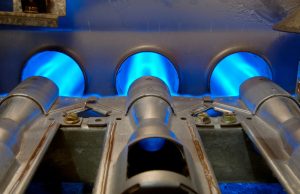When temperatures dip below freezing, your furnace becomes more than just a comfort—it’s a lifeline. And at the heart of that furnace is one of the most critical safety components in your home: the heat exchanger. Let’s review what a heat exchanger is and its importance in the operation of your furnace. If you ever suspect a problem, prompt professional furnace repair in St. Paul, MN is essential to protect your household from serious risks.
What the Heat Exchanger Does
The heat exchanger is the part of your furnace that separates the air you breathe from the hot combustion gases your system produces to generate heat. Inside the exchanger, fuel (usually natural gas or propane) burns to create intense heat.
That heat transfers through metal walls to warm the air that flows into your home’s ducts. Crucially, those combustion gases—containing carbon monoxide (CO) and other toxic byproducts—stay sealed inside the exchanger and are safely vented outside.
How a Heat Exchanger Can Fail
Over time, the constant heating and cooling cycle puts tremendous stress on the metal walls of the exchanger. These temperature changes cause expansion and contraction, which can eventually lead to cracks or corrosion. A cracked heat exchanger is a serious problem—it means those deadly combustion gases could leak directly into your home’s air supply. Other causes of damage include:
- Poor airflow due to a dirty air filter or blocked vents, which can cause overheating.
- Rust or corrosion from excess moisture or improper venting.
- Lack of maintenance, which allows small issues to turn into major hazards.
The Hidden Dangers of a Cracked Heat Exchanger
A cracked heat exchanger turns your furnace into a silent danger. The biggest threat is carbon monoxide poisoning—an odorless, colorless gas that can cause nausea, headaches, confusion, and even death. If you ever notice soot around your furnace, strange smells, or unexplained physical symptoms while the system runs, it’s vital to shut it off immediately and call for professional furnace service.
Symptoms of a Cracked Heat Exchanger
You might not see the damage itself, but your furnace often gives warning signs, including:
- Unusual smells (like formaldehyde or burning metal) when the furnace runs
- Soot buildup near the furnace or vents
- Frequent system shutdowns or burner flame flickering yellow or orange
- Unexplained physical symptoms such as headaches or dizziness
If you experience any of these issues, treat it as an emergency.
Annual Maintenance Can Save Lives
Routine furnace maintenance isn’t just about efficiency—it’s about safety. During an annual tune-up, our technicians inspect the heat exchanger for any signs of damage or stress. Catching a small crack early can prevent dangerous gas leaks, save you costly repairs, and most importantly, protect your family’s health.
Your furnace’s heat exchanger quietly protects your home every winter. Don’t wait until it fails—schedule your annual inspection now and let our experts ensure your heating system remains safe, reliable, and life-saving all season long.

